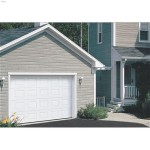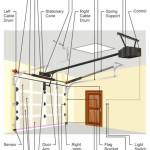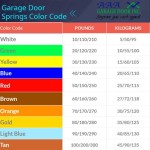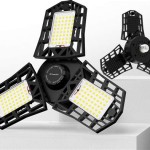Best Epoxy Garage Floor Coatings: A Comprehensive Guide
Epoxy garage floor coatings have become increasingly popular for homeowners and businesses seeking a durable, aesthetically pleasing, and low-maintenance flooring solution. Compared to bare concrete, epoxy offers a significant upgrade in terms of resistance to chemicals, abrasion, and impacts, as well as improved aesthetics. This article provides a comprehensive guide to understanding epoxy garage floor coatings, exploring different types, application processes, and factors to consider when selecting the best option for a specific need.
The term "epoxy" refers to a thermosetting polymer formed from the reaction of an epoxide "resin" with a polyamine "hardener" or "curing agent." This chemical reaction creates a rigid, cross-linked structure that provides the coating with its superior strength and durability. The specific properties of the epoxy coating can be tailored by varying the resin and hardener components, as well as by adding pigments, additives, and fillers. Consequently, a wide variety of epoxy floor coatings are available on the market, each with its own set of advantages and disadvantages.
Before delving into the specifics of different epoxy coatings, it’s important to understand the advantages they offer over traditional concrete floors. Untreated concrete is porous, making it prone to staining from oil spills, chemicals, and other liquids. Over time, concrete can also crack and crumble, leading to dust and requiring repairs. Epoxy coatings create a seamless, non-porous barrier that protects the concrete from these damages. They are also easy to clean and maintain, requiring only occasional sweeping and mopping. The smooth, glossy surface of an epoxy floor can also significantly enhance the appearance of a garage or workshop, making it a more pleasant and professional space.
Understanding Different Types of Epoxy Coatings
The market offers numerous types of epoxy coatings, each suited for specific applications and offering varying levels of performance. Understanding these differences is crucial in selecting the appropriate coating for a garage floor.
1. Solid Epoxy Coatings: Solid epoxy coatings are considered the highest quality and most durable type of epoxy flooring. They contain nearly 100% epoxy solids, meaning there are minimal or no solvents in the formulation. This results in a thicker, more robust coating that offers excellent resistance to abrasion, chemicals, and impacts. Solid epoxy coatings are typically more expensive than other types but provide the longest-lasting and most reliable protection for a garage floor. They require professional installation due to their fast curing time and specific application requirements.
2. Water-Based Epoxy Coatings: Water-based epoxy coatings are a popular choice for homeowners due to their ease of application and lower odor compared to solvent-based options. They contain epoxy resins dispersed in water, which acts as the carrier. While not as durable as solid epoxy coatings, water-based epoxies still offer good protection against staining and light abrasion. They are generally less expensive and easier to apply, making them a suitable option for residential garages with moderate use. However, they might require multiple coats to achieve the desired thickness and durability.
3. Solvent-Based Epoxy Coatings: Solvent-based epoxy coatings utilize solvents as the carrier for the epoxy resins. These coatings offer excellent adhesion to concrete and generally provide good durability and chemical resistance. However, they have a strong odor due to the solvents and require proper ventilation during application. Solvent-based epoxies are typically more expensive than water-based options and may be subject to stricter environmental regulations due to the volatile organic compounds (VOCs) released during curing.
4. Epoxy Floor Paint (Single-Part Epoxy): Although often marketed as "epoxy paint," these products are typically acrylic latex paints with a small amount of epoxy resin added. They offer minimal protection compared to true epoxy coatings and are best suited for light-duty applications where aesthetics are the primary concern. Epoxy floor paints are easy to apply and relatively inexpensive but are not recommended for garages that experience heavy traffic, chemicals, or impacts. They are prone to chipping, peeling, and scratching.
5. Self-Leveling Epoxy Coatings: These coatings are designed to create a smooth, seamless surface, even on slightly uneven floors. They are typically applied as a thicker layer and allowed to self-level, resulting in a glossy, professional-looking finish. Self-leveling epoxy coatings are often used in commercial and industrial settings but can also be a good option for residential garages where a perfectly smooth and level floor is desired. They are generally more expensive than other types of epoxy coatings and require professional installation.
Factors to Consider When Choosing an Epoxy Coating
Selecting the best epoxy garage floor coating involves considering several factors, including the level of traffic, exposure to chemicals, desired aesthetics, and budget.
1. Traffic and Usage: The amount of traffic and the type of activities that occur in the garage will significantly influence the type of epoxy coating needed. For garages that experience heavy traffic from vehicles, tools, and equipment, a solid epoxy coating is recommended for its superior durability and resistance to abrasion. For garages used primarily for parking and light storage, a water-based or solvent-based epoxy coating might be sufficient. Consider also if the garage will be used for automotive repair or other activities that involve potentially damaging chemicals.
2. Chemical Resistance: Garages are often exposed to a variety of chemicals, including oil, gasoline, brake fluid, antifreeze, and cleaning solvents. It is essential to choose an epoxy coating that is resistant to these chemicals to prevent staining, etching, and degradation of the floor. Solid epoxy coatings generally offer the best chemical resistance, while water-based and solvent-based options may vary depending on their specific formulation. Always check the manufacturer's specifications to ensure the coating is suitable for the specific chemicals it will be exposed to.
3. Aesthetics and Design: Epoxy coatings are available in a wide range of colors, patterns, and finishes, allowing for customization to match the desired aesthetic. Metallic epoxy coatings, for example, offer a unique, shimmering effect, while flake epoxy coatings incorporate decorative flakes for added texture and visual appeal. Consider the overall style of the garage and choose a coating that complements the existing decor. The level of gloss can also be selected, from matte to high-gloss finishes.
4. Budget: The cost of epoxy garage floor coatings can vary significantly depending on the type of coating, the size of the garage, and the labor costs associated with installation. Solid epoxy coatings are typically the most expensive, while water-based and epoxy floor paints are more affordable. Consider the long-term value and durability of the coating when making a decision. While a cheaper option might seem appealing initially, it may require more frequent repairs or replacement, ultimately costing more in the long run. Obtaining multiple quotes from different contractors can help ensure a competitive price.
5. Ease of Application: While some epoxy coatings are relatively easy to apply as a DIY project, others require professional installation due to their specific application requirements and fast curing times. Water-based epoxy coatings are generally the easiest to apply, while solid epoxy coatings often require specialized equipment and expertise. Consider your level of experience and comfort with DIY projects when making a decision. If you are not confident in your ability to properly prepare the floor and apply the coating, it is best to hire a professional installer.
6. Surface Preparation Requirements: Proper surface preparation is crucial for the success of any epoxy flooring project. The concrete floor must be thoroughly cleaned, degreased, and etched to ensure proper adhesion of the epoxy coating. This typically involves grinding or acid etching the surface to create a rough profile. Failure to properly prepare the surface can lead to delamination, peeling, and other problems. Some epoxy coatings require more extensive surface preparation than others, so it is important to follow the manufacturer's instructions carefully.
Application Process for Epoxy Garage Floor Coatings
The application process for epoxy garage floor coatings typically involves several steps, including surface preparation, mixing the epoxy components, and applying the coating. While specific instructions may vary depending on the product, the following is a general overview of the process:
1. Surface Preparation: This is arguably the most critical step in the entire process. Begin by removing all items from the garage and thoroughly cleaning the floor to remove any dirt, grease, oil, or other contaminants. Use a degreaser to remove stubborn stains, and then rinse the floor thoroughly. Next, etch the concrete surface using a concrete grinder or an acid etching solution. This will create a rough profile that allows the epoxy coating to bond properly. Rinse the floor again and allow it to dry completely.
2. Crack and Repair Filling: Inspect the concrete floor for any cracks, holes, or other imperfections. Use a concrete patch or epoxy filler to repair these areas, following the manufacturer's instructions. Allow the filler to dry completely before proceeding to the next step.
3. Priming (Optional): Some epoxy systems require the application of a primer coat to improve adhesion and prevent the epoxy coating from being absorbed into the concrete. Follow the manufacturer's recommendations regarding the use of a primer.
4. Mixing the Epoxy: Carefully mix the epoxy resin and hardener according to the manufacturer's instructions. Use a drill with a mixing paddle to ensure thorough blending of the components. Be sure to scrape the sides and bottom of the mixing container to ensure all of the epoxy is properly mixed. Work quickly, as the epoxy will begin to cure after mixing.
5. Applying the Epoxy Coating: Pour the mixed epoxy onto the prepared concrete floor and spread it evenly using a squeegee or roller. Apply the epoxy in thin, even coats to avoid trapping air bubbles. If applying multiple coats, allow each coat to dry completely before applying the next. Follow the manufacturer's recommendations regarding drying times and recoating intervals.
6. Adding Decorative Flakes (Optional): If desired, decorative flakes can be sprinkled onto the wet epoxy coating after application. Distribute the flakes evenly across the surface and allow them to settle before the epoxy cures. Once the epoxy is dry, sweep away any excess flakes. A clear topcoat may be applied to seal the flakes and provide additional protection.
7. Curing: Allow the epoxy coating to cure completely before using the garage. Follow the manufacturer's recommendations regarding curing times, which can vary depending on the type of epoxy and the ambient temperature. Avoid walking or driving on the floor during the curing process.

The 7 Best Garage Floor Coatings Detailed Reviews Guide

Garage Flooring Ideas Best Options To Upgrade Your Space And Vancouver

The Best Garage Floor Coating And Why Cyclospartic Is Even Better Force

What Are The Best And Worst Garage Floor Coating Options We Rank Them All

How To Pick The Best Garage Floor Coating

Garage Floor Coating Options Polyurea And More

What Makes The Best Garage Floor Coating

Why Is The Most Effective Garage Floor Coating

The Ultimate Guide To Finding Best Garage Floor Coating For Your Needs Wise Coatings Portland

What Are The Best And Worst Garage Floor Coating Options We Rank Them All








